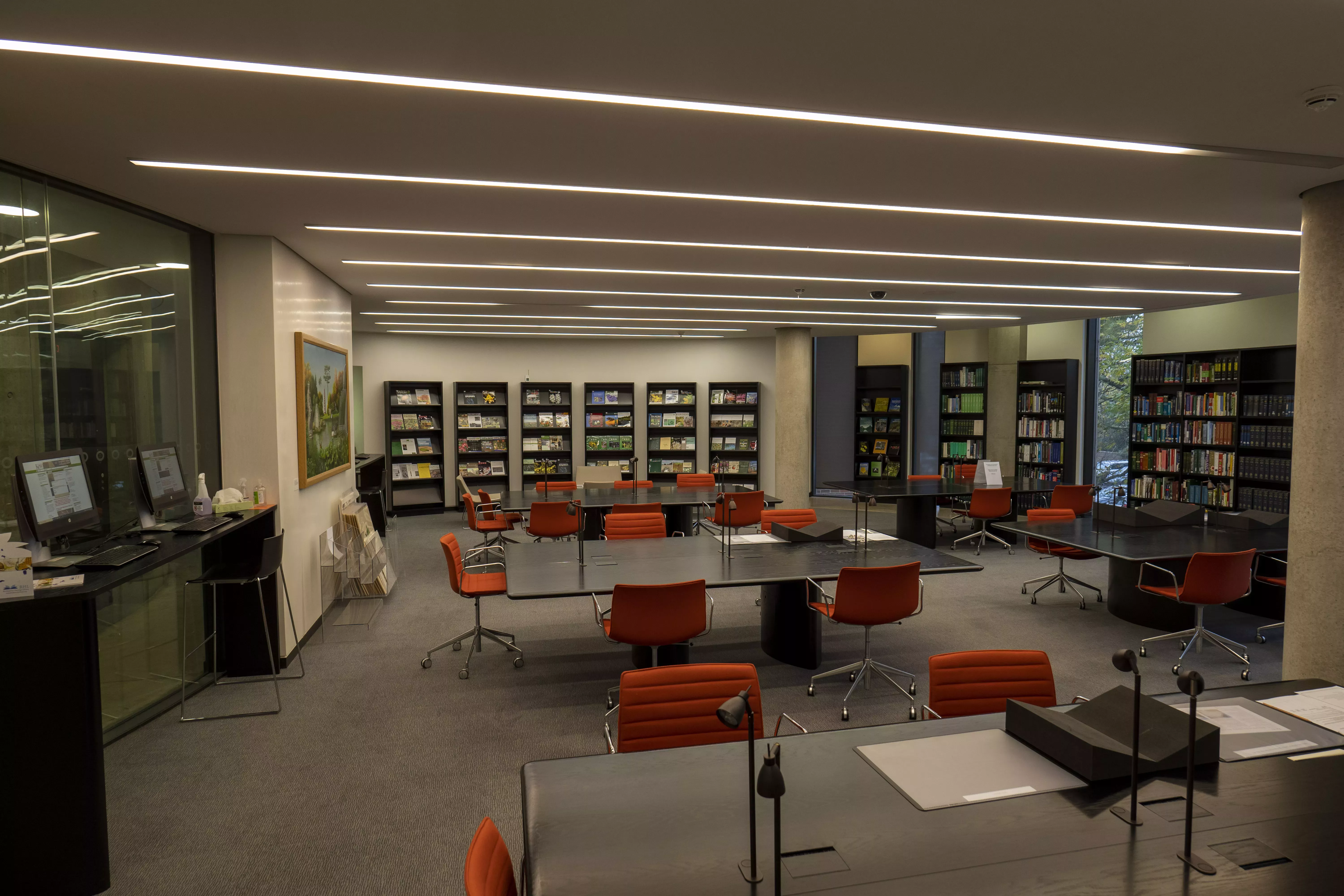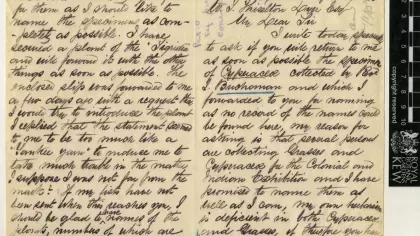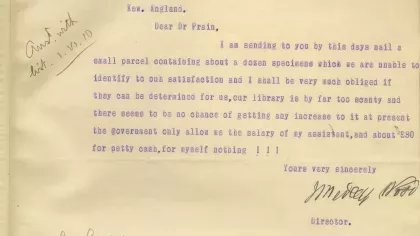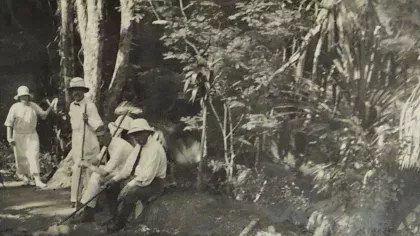20 December 2022
Creative explorations and botanical imaginations
Artist Anushka Tay reflects on her new exhibition exploring 19th century plant collection in East Asia, now on display at Kew's Library and Archive Reading Room.

A knitted ramie sock, diplomatic reports, and delicious fruits; this may be an unusual combination of artefacts and items, but that’s exactly the point of my new exhibition Curious & Miscellaneous, now on public display at Kew’s Library and Archives Reading Room until 26 January 2023.
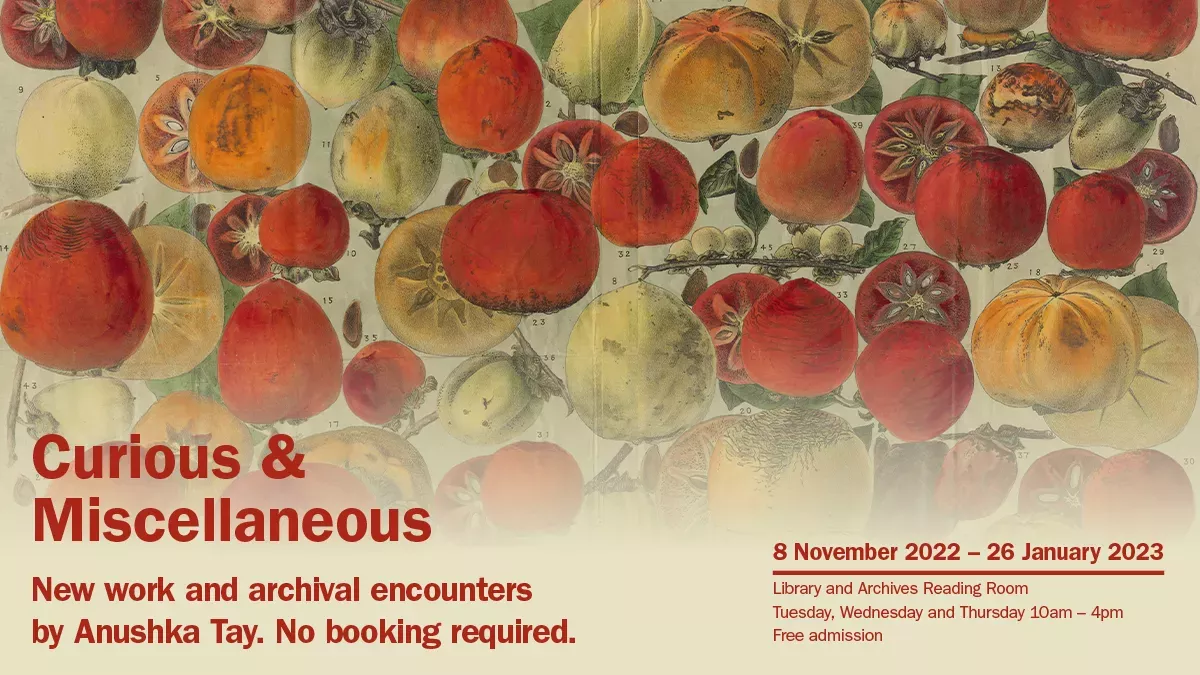
An artist residency at Kew
As an artist and researcher, I came to Kew this summer for an artist residency. I combed through Kew's archive, researching the documentation, histories and journeys of plant collection across East Asia from the 19th and early-20th century.
From sinuous trees to beautiful scented flowers, Chinese plants have long been popular in British gardens. But the botany of China goes far beyond the ornamental.
From the mid-19th century onwards, Kew explored the uses of plants in China, including in food, medicine, clothing, and transportation.
I responded to the historical materials in the Miscellaneous Reports collection through painting, writing, music, and the curation of my exhibition Curious & Miscellaneous.
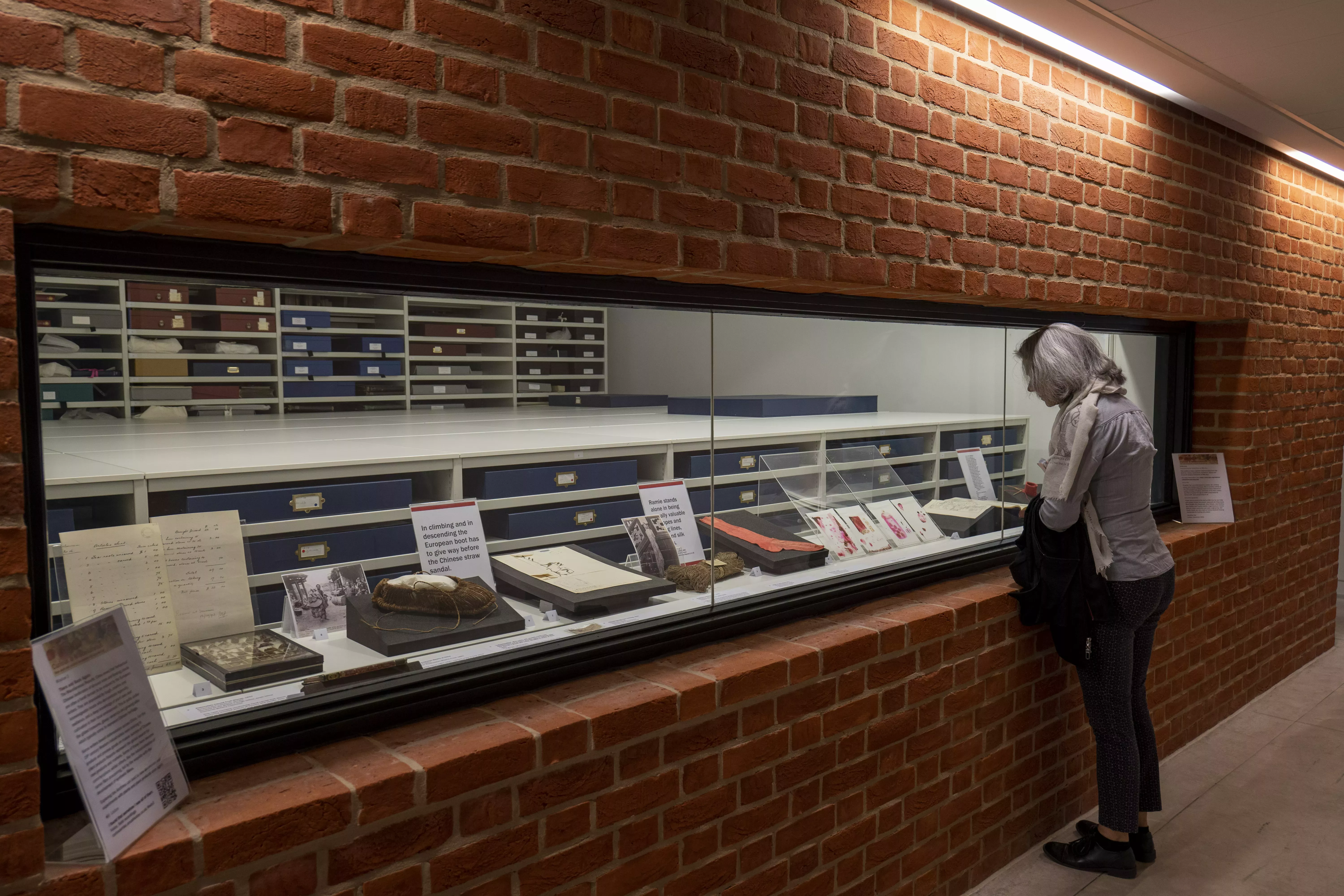
About the Miscellaneous Reports collection
The Miscellaneous Reports are a collection of 772 volumes, containing papers dating from 1850 to 1928.
They represent Kew’s correspondence with a global network of botanical gardens, plant collectors and dealers, and Foreign and Colonial Office administrators.
The materials inside are extremely varied: from specimen lists to detailed geographic reports of plant uses, small samples of fibres, invoices for shipping costs, and letters between Kew Directors and British diplomats.
Hidden stories within the collection
Whilst conducting research, I have often found that my own heritage has given me a sensitive outlook on historical materials.
As a British person with Malaysian-Chinese heritage, I have been alert to the subjective nature of representations, and am frequently aware of the absences of cultures, peoples and alternate perspectives in official historical records.
As such, some of the material within the Miscellaneous Reports is rather challenging. Much of the knowledge documented in the collection was amassed through interactions between European botanists living in China, and local Chinese and Indigenous peoples, yet these local people were largely uncredited.
By contrast, the European botanists were eager to leave their own mark on a system where the practice of naming was paramount in the recording and classification of plants.


The collection is inevitably a product of its times and the views of the writers within are so different from ours today, yet there is still much within the Miscellaneous Reports which can both intrigue and inform.
For example, an 1877 pamphlet lobbying the British government against the opium trade in China is evidence of genuine sympathy for Chinese victims of opium addiction and is a direct call for accountability.
I believe that it is important to acknowledge the complexity of the period, whilst considering how artists and researchers today can use the materials to stimulate work and make new connections.
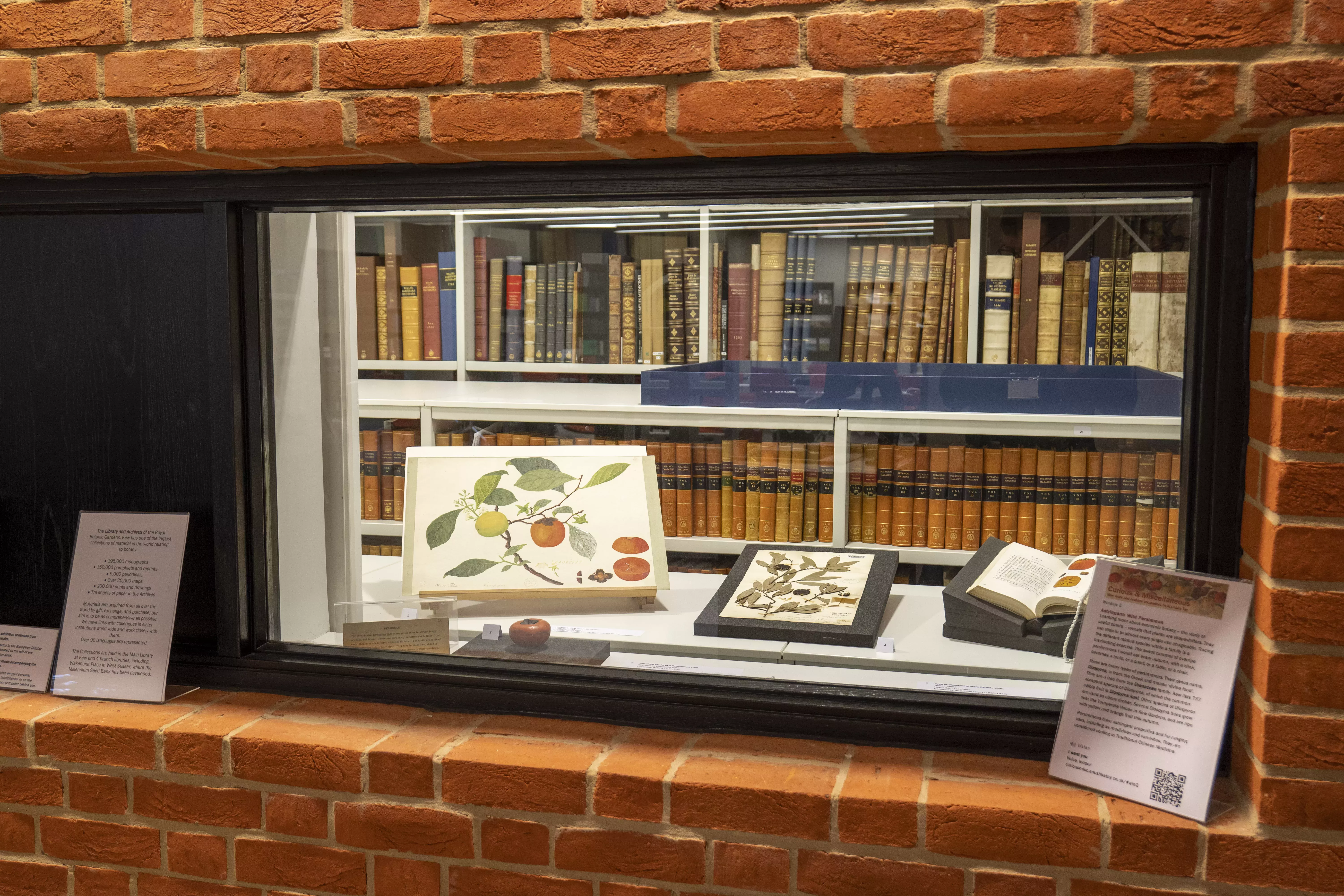
Creative responses to botanical history
I am currently completing my PhD in diaspora and cultural studies at the University of the Arts, London. I am particularly interested in how people dress and present themselves in different cultural spaces.
As I researched Kew's archival materials this summer, I came across a sock made from ramie that was manufactured in the early 19th century.
Ramie, a flowering plant in the nettle family, has been cultivated for centuries principally in China to make a light, strong natural fabric.
I felt compelled to knit a sock in response, and even managed to find a ramie-blend yarn in exactly the same colour - now on display at Curious & Miscellaneous.
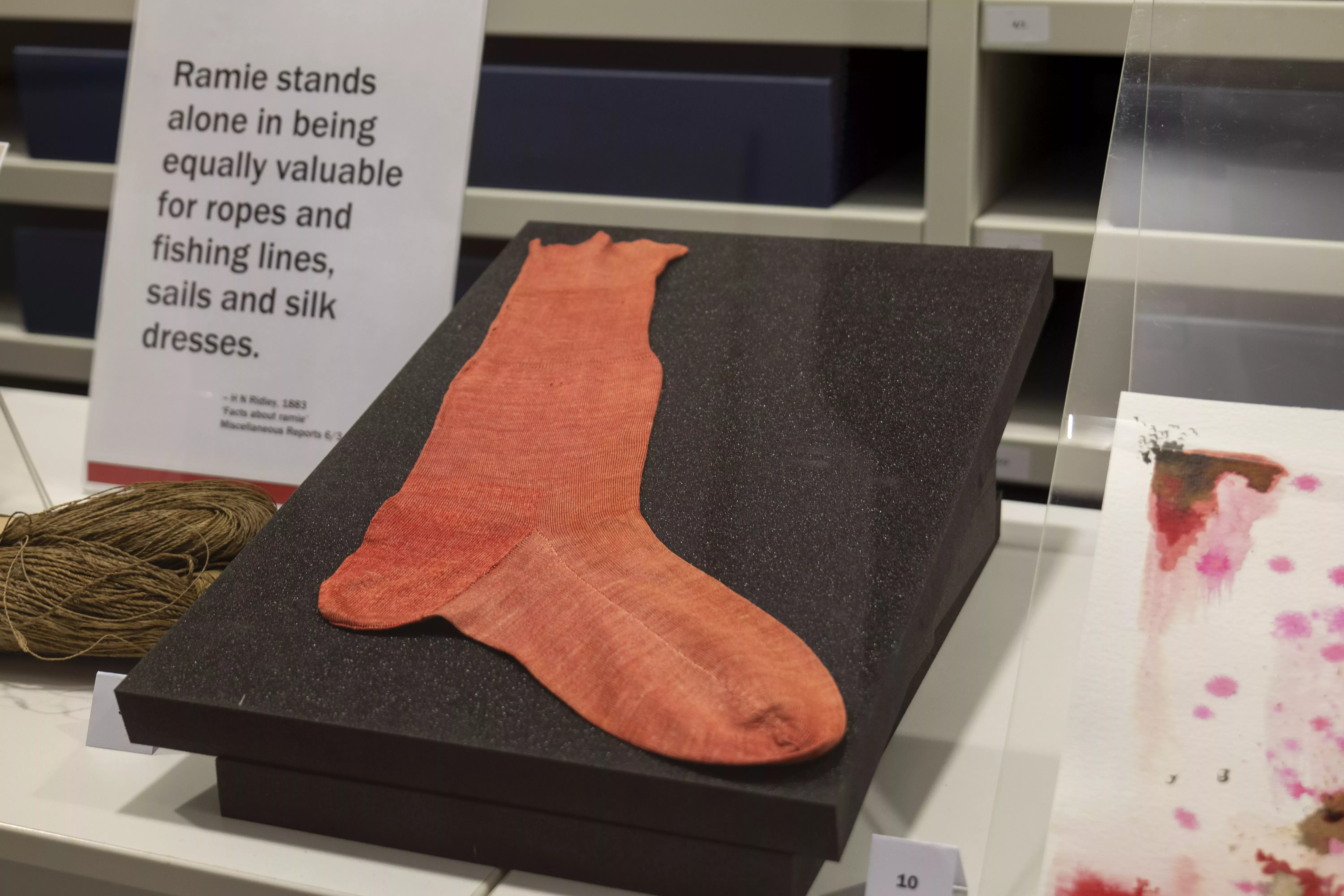
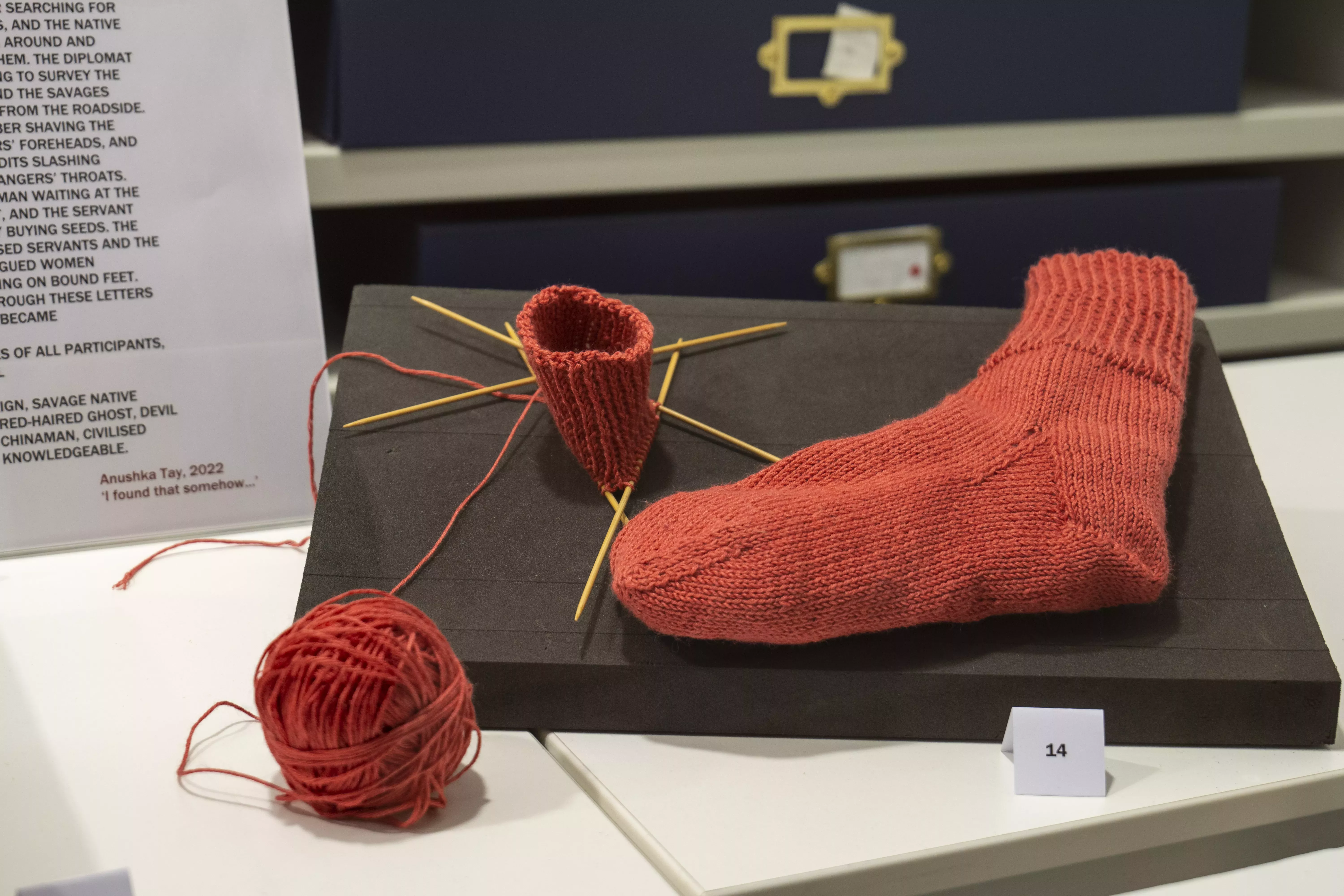
Through the curation of my exhibition, I traced many of the objects and plant specimens which had been sent to Kew during the 19th century, but which were subsequently separated and held in different collections.
I was able to reunite the collectors, objects and plants, and display many items from Kew’s collection including dried plant specimens from the Herbarium, botanical illustrations, and much more. I show these alongside my artistic responses and soundscape.
The exhibition is now open to the public, and I hope that throughout, my work has showcased the many unheard voices of people who were always present in the materials – only waiting to come out.
Visit the exhibition
Curious & Miscellaneous: New work and archival encounters by Anushka Tay.
Location: Reception and Library & Archive Reading Room, Herbarium Building, Kew Gardens
Dates and time: Open until 26 January 2023, Tuesday to Thursday, 10am to 4pm
Price: Free entry, contact library@kew.org to arrange your visit, or simply drop in to visit during Reading Room opening hours.
